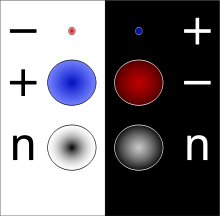 ßĆĪßĆÖßĆŠßĆ»ßĆößĆ║ (ßĆØßĆ▓) ßĆößĆŠßĆäßĆĘßĆ║ ßĆåßĆößĆĘßĆ║ßĆĆßĆ╗ßĆäßĆ║ßĆśßĆĆßĆ║ßĆĪßĆÖßĆŠßĆ»ßĆößĆ║ (ßĆÜßĆ¼) ßĆÉßĆŁßĆ»ßĆĘßüÅ ßĆ£ßĆ╗ßĆŠßĆĢßĆ║ßĆģßĆģßĆ║ßĆōßĆ¼ßĆÉßĆ║ßĆåßĆ▒ßĆ¼ßĆäßĆ║ßĆĪßĆ¼ßĆĖ ßĆ×ßĆøßĆ»ßĆĢßĆ║ßĆĢßĆ╝ßĆæßĆ¼ßĆĖßĆĢßĆ»ßĆČßüŗ ßĆæßĆŁßĆĢßĆ║ßĆÖßĆŠßĆĪßĆ▒ßĆ¼ßĆĆßĆ║ßĆüßĆ╝ßĆ▒ßĆ×ßĆŁßĆ»ßĆĘ- ßĆĪßĆ«ßĆ£ßĆĆßĆ║ßĆæßĆøßĆĮßĆößĆ║/ßĆĢßĆŁßĆ»ßĆģßĆ«ßĆæßĆøßĆĮßĆößĆ║ßüŖ ßĆĢßĆøßĆŁßĆ»ßĆÉßĆĮßĆößĆ║/ßĆåßĆößĆĘßĆ║ßĆĆßĆ╗ßĆäßĆ║ßĆśßĆĆßĆ║ßĆĢßĆøßĆŁßĆ»ßĆÉßĆĮßĆößĆ║ßüŖ ßĆößĆÜßĆ░ßĆæßĆøßĆĮßĆößĆ║/ßĆåßĆößĆĘßĆ║ßĆĆßĆ╗ßĆäßĆ║ßĆśßĆĆßĆ║ßĆößĆÜßĆ░ßĆæßĆøßĆĮßĆößĆ║
ßĆĪßĆÖßĆŠßĆ»ßĆößĆ║ (ßĆØßĆ▓) ßĆößĆŠßĆäßĆĘßĆ║ ßĆåßĆößĆĘßĆ║ßĆĆßĆ╗ßĆäßĆ║ßĆśßĆĆßĆ║ßĆĪßĆÖßĆŠßĆ»ßĆößĆ║ (ßĆÜßĆ¼) ßĆÉßĆŁßĆ»ßĆĘßüÅ ßĆ£ßĆ╗ßĆŠßĆĢßĆ║ßĆģßĆģßĆ║ßĆōßĆ¼ßĆÉßĆ║ßĆåßĆ▒ßĆ¼ßĆäßĆ║ßĆĪßĆ¼ßĆĖ ßĆ×ßĆøßĆ»ßĆĢßĆ║ßĆĢßĆ╝ßĆæßĆ¼ßĆĖßĆĢßĆ»ßĆČßüŗ ßĆæßĆŁßĆĢßĆ║ßĆÖßĆŠßĆĪßĆ▒ßĆ¼ßĆĆßĆ║ßĆüßĆ╝ßĆ▒ßĆ×ßĆŁßĆ»ßĆĘ- ßĆĪßĆ«ßĆ£ßĆĆßĆ║ßĆæßĆøßĆĮßĆößĆ║/ßĆĢßĆŁßĆ»ßĆģßĆ«ßĆæßĆøßĆĮßĆößĆ║ßüŖ ßĆĢßĆøßĆŁßĆ»ßĆÉßĆĮßĆößĆ║/ßĆåßĆößĆĘßĆ║ßĆĆßĆ╗ßĆäßĆ║ßĆśßĆĆßĆ║ßĆĢßĆøßĆŁßĆ»ßĆÉßĆĮßĆößĆ║ßüŖ ßĆößĆÜßĆ░ßĆæßĆøßĆĮßĆößĆ║/ßĆåßĆößĆĘßĆ║ßĆĆßĆ╗ßĆäßĆ║ßĆśßĆĆßĆ║ßĆößĆÜßĆ░ßĆæßĆøßĆĮßĆößĆ║
ßĆĪßĆÖßĆŠßĆ»ßĆößĆ║ßĆøßĆ░ßĆĢßĆŚßĆ▒ßĆÆßĆÉßĆĮßĆäßĆ║ ßĆĪßĆÖßĆŠßĆ»ßĆößĆ║ßĆĪßĆÖßĆ╗ßĆŁßĆ»ßĆĖßĆĪßĆģßĆ¼ßĆĖßĆÉßĆŁßĆ»ßĆäßĆ║ßĆĖßĆ×ßĆŖßĆ║ ßĆÉßĆ░ßĆŖßĆ«ßĆ×ßĆ▒ßĆ¼ ßĆÆßĆ╝ßĆĢßĆ║ßĆæßĆ»ßĆößĆŠßĆäßĆĘßĆ║ ßĆåßĆößĆĘßĆ║ßĆĆßĆ╗ßĆäßĆ║ßĆśßĆĆßĆ║ßĆōßĆ¼ßĆÉßĆ║ßĆåßĆ▒ßĆ¼ßĆäßĆ║ßĆ×ßĆ▒ßĆ¼ ßĆåßĆößĆĘßĆ║ßĆĆßĆ╗ßĆäßĆ║ßĆśßĆĆßĆ║ßĆĪßĆÖßĆŠßĆ»ßĆößĆ║ßĆößĆŠßĆäßĆĘßĆ║ ßĆåßĆĆßĆ║ßĆößĆĮßĆÜßĆ║ßĆ£ßĆ╗ßĆĆßĆ║ßĆøßĆŠßĆŁßĆ×ßĆŖßĆ║ßüŗ ßĆźßĆĢßĆÖßĆ¼ ßĆĪßĆ«ßĆ£ßĆĆßĆ║ßĆæßĆøßĆĮßĆößĆ║ßüÅ ßĆåßĆößĆĘßĆ║ßĆĆßĆ╗ßĆäßĆ║ßĆśßĆĆßĆ║ßĆĪßĆÖßĆŠßĆ»ßĆößĆ║ßĆÖßĆŠßĆ¼ ßĆĢßĆŁßĆ»ßĆģßĆ«ßĆæßĆøßĆĮßĆößĆ║ßĆ¢ßĆ╝ßĆģßĆ║ßĆ×ßĆŖßĆ║ßüŗ ßĆÜßĆäßĆ║ßĆĖßĆĪßĆ¼ßĆĖ ßĆåßĆößĆĘßĆ║ßĆĆßĆ╗ßĆäßĆ║ßĆśßĆĆßĆ║ßĆĪßĆ«ßĆ£ßĆĆßĆ║ßĆæßĆøßĆĮßĆößĆ║ßƤßĆ░ßüŹ ßĆüßĆ▒ßĆ½ßĆ║ßĆåßĆŁßĆ»ßĆößĆŁßĆ»ßĆäßĆ║ßĆ×ßĆŖßĆ║ßüŗ ßĆĪßĆ«ßĆ£ßĆĆßĆ║ßĆæßĆøßĆĮßĆößĆ║ßĆ×ßĆŖßĆ║ ßĆ£ßĆ╗ßĆŠßĆĢßĆ║ßĆģßĆģßĆ║ßĆĪßĆÖßĆōßĆ¼ßĆÉßĆ║ßĆåßĆ▒ßĆ¼ßĆäßĆ║ßĆĢßĆ╝ßĆ«ßĆĖ ßĆĢßĆŁßĆ»ßĆģßĆ«ßĆæßĆøßĆĮßĆößĆ║ßĆ×ßĆŖßĆ║ ßĆ£ßĆ╗ßĆŠßĆĢßĆ║ßĆģßĆģßĆ║ßĆĪßĆ¢ßĆŁßĆ»ßĆōßĆ¼ßĆÉßĆ║ßĆåßĆ▒ßĆ¼ßĆäßĆ║ßĆĢßĆ╝ßĆ«ßĆĖ ßĆøßĆ▒ßĆÆßĆ«ßĆÜßĆŁßĆ»ßĆ×ßĆÉßĆ╣ßĆÉßĆŁßĆĆßĆ╝ßĆĮßĆĢßĆ╝ßĆŁßĆ»ßĆĆßĆĮßĆ▓ßĆÖßĆŠßĆ»ßĆĪßĆÖßĆ╗ßĆŁßĆ»ßĆĖßĆĪßĆģßĆ¼ßĆĖßĆĪßĆüßĆ╗ßĆŁßĆ»ßĆĘßĆÉßĆĮßĆäßĆ║ ßĆ×ßĆśßĆ¼ßĆØßĆĪßĆÉßĆŁßĆ»ßĆäßĆ║ßĆĖ ßĆæßĆ»ßĆÉßĆ║ßĆ£ßĆĮßĆŠßĆÉßĆ║ßĆ×ßĆŖßĆ║ßüŗ ßĆæßĆŁßĆ»ßĆößĆŖßĆ║ßĆĖßĆĪßĆÉßĆŁßĆ»ßĆäßĆ║ßĆĖßĆĢßĆäßĆ║ ßĆĢßĆŁßĆ»ßĆģßĆ«ßĆæßĆøßĆĮßĆößĆ║ßüÅ ßĆåßĆößĆĘßĆ║ßĆĆßĆ╗ßĆäßĆ║ßĆśßĆĆßĆ║ßĆĪßĆÖßĆŠßĆ»ßĆößĆ║ßĆÖßĆŠßĆ¼ ßĆĪßĆ«ßĆ£ßĆĆßĆ║ßĆæßĆøßĆĮßĆößĆ║ßĆ¢ßĆ╝ßĆģßĆ║ßĆ×ßĆŖßĆ║ßüŗ
ßĆĆßĆŁßĆ»ßĆĖßĆĆßĆ¼ßĆĖ